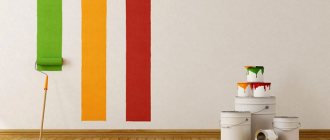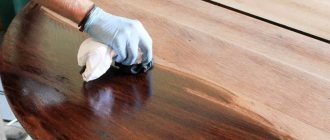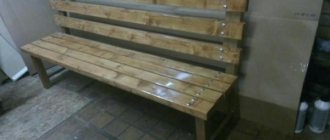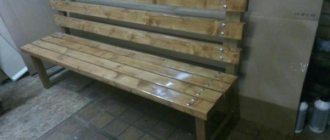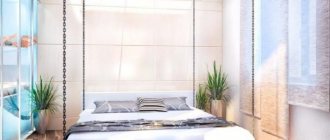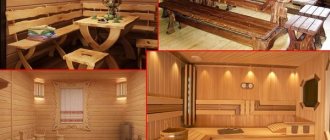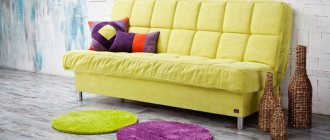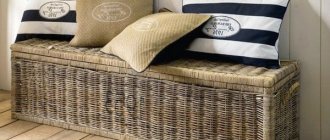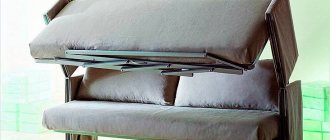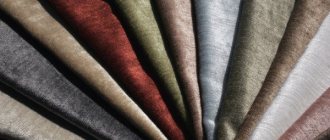Beautiful antique furniture is a decoration for any room. And painting, which you can do yourself, will help restore an old item to an attractive appearance. The main thing is to choose the right paint and application technique.
This is the most important stage of the work. It is important to prepare surfaces for paint application and clean them. The simplest option is chemical, using a special composition, the choice of which depends on the type of old coating. When implementing, it is important to follow safety precautions, work with gloves and in a ventilated area. The second method is thermal, which involves exposing the old coating to warm air or steam. Helps get rid of paint and polish. After heat treatment, the surfaces are cleaned with a scraper and sanded with sandpaper.
Tools and materials for painting
To paint surfaces, you can choose the tool that is more familiar or convenient to you. A roller is suitable for wide surfaces; a brush is suitable for fittings and small parts.
Spray gun
This painting tool can be manual, pneumatic, or electric. The first ones do not require electricity. Structurally, they are cylinders with a pump and hoses for pumping the composition and spraying. It is quite difficult to achieve uniform distribution of paint on the surface with their help, so hand-held spray guns are outdated.
Pneumatic ones make it possible to apply paint in an even, thin layer and are easy to use. However, you can only work if you choose a liquid paint and varnish composition. In addition, a colorful mist will appear - some of the paint will remain in the air. Professional equipment to minimize fog is expensive.
Electric models are protected from fog, but a thick layer of paint and varnish gets on the surface.
Roller
This is the most common tool for painting furniture, regardless of style. It can be used for any type of surface, is easy to use, and inexpensive. However, it will not be possible to process thin elements; in this case, the roller is replaced with a brush. This also applies to tinting corners and joints. In addition, the roller coat needs to be replaced periodically.
- Save time by covering a large area.
- Economical consumption of paint and varnish composition.
- Possibility to avoid drips.
For applying oil and water-based compositions, it is better to choose a velor roller.
Spray can
Advantages of spray painting furniture:
- The work can be completed quickly.
- No additional equipment required.
- No work experience required. The aerosol is completely ready for use.
- The paint layer is thin, the consumption is economical.
- Good adhesion to any surface.
- A huge selection of colors and tones, including gold, silver, mother-of-pearl.
- Possibility of painting hard-to-reach areas, including corners and folds. Using a spray can, you can create designs and decor when painting furniture.
The downside is that you won’t be able to use an aerosol to treat large surfaces. You need to work with the spray can carefully, otherwise drips will appear.
Common mistakes
The result obtained may not coincide with expectations if errors were made during the work process. For example, to avoid cracking of a finished surface, it is necessary to use materials from the same manufacturer, which are most suitable for each other in their chemical composition.
Areas with gaps are caused by incorrect movements during painting. The hand and brush should move smoothly; it is important to ensure that weakly painted areas do not appear during the work. Drips occur when the paint is too liquid or applied in a very thick layer. Its consistency should be of moderate thickness. Furniture renovation will be as successful as possible if you take into account all the listed points and avoid them in your work.
Use materials of the same class=”aligncenter” width=”1920″ height=”1080″[/img] Move the hand and brush smoothly
The consistency of the paint should be of moderate thickness
How to choose paint for furniture
Manufacturers offer a huge selection of paint. When painting old furniture, it is best to choose water-based compositions - acrylic or thixotropic. The first one is easy to dilute in water, it is quickly applied and dries. The second one does not drip; when it dries, it becomes like plastic and very dense.
On sale you can find options for painting garden furniture; it cannot be used for household items.
When choosing, take into account the style and characteristics of the item. If the task is to preserve the natural texture and natural color, then colorless compositions are chosen. They will protect surfaces from adverse external influences, only slightly changing its shade.
And if you need to paint without preliminary preparation of surfaces, it is better to stick with acrylic paint. Alkyd options will provide the best protection, while oil-based ones will help create a matte texture.
Preparatory work
It is clear that before you repaint old furniture, you need to prepare it. First of all, clean the surface to be painted. There are several cleaning methods:
- Chemical – treatment with special compounds. Before using them, you need to wear gloves to protect your hands, as they are aggressive;
- Thermal - the use of steam or hot air. For these purposes, a construction hair dryer is used. A hot air stream destroys and softens the layer of old paint, which is easily removed with a spatula.
After analysis and cleaning, the surfaces can be painted in a new color. If the idea is to use contrasting shades, then the light one is painted first, only then the dark one. This will allow deficiencies, if any, to be corrected in a timely manner.
Types of paint for furniture
- Acrylic. Acrylic compositions can be water-based or varnish-based; they do not have an unpleasant “chemical” smell, dry quickly enough, and are safe for health. Painting old furniture with acrylic paint is suitable when working with solid objects, as well as chipboard and MDF. To protect materials from mold, acrylic paints contain an antiseptic, which also extends the life of the product. Primary colors are matte, close to natural; furniture acrylic paints in bright colors are rare.
- Alkyd. Alkyd paints with moisture-repellent properties are no less popular. They are permeable to steam, dry quickly and are used economically. The main component is alkyd resins, into which solvents based on polyhydric alcohol are introduced. Suitable for working with objects made of wood, plywood, chipboard.
- Drying oil based paints. To prepare oil-based paint for painting furniture, drying oil and vegetable fats are used. Easy to use, it has an unpleasant odor, which is why it is often chosen for working with objects outdoors. Such compositions are gradually losing popularity because they take a very long time to dry, can become cracked due to UV rays, and are also not permeable to steam. The only area in which they are indispensable is painting in a vintage style.
- Latex. Latex compositions made on a water-emulsion basis are good. They contain artificial latex. Such options penetrate well into the structure of the wood, creating a film on the surface that allows the wood to “breathe.” Often used for restoration of veneer products.
- Silicone. Silicone compounds are considered the most stable, but they are expensive. By creating a protective film on the surface, they do not interfere with normal air circulation. The advantage of this paint for painting old furniture is that the color will last for a long time.
Decoration
You can decorate old furniture with decor; this process is not at all difficult. This approach will be considered radical and fashionable at the same time. The main thing is to know what paint to apply the decor with, and which one to use to consistently carry out the decorating process. You can use anything as decoration: a drawing, make contrasting inserts, treat parts of the facade with fabric, and so on. Here are the easiest ways to restore old interior items:
- Vinyl stickers. Not everyone is eager to first sand old furniture, then putty and prime it. If it looks very boring, despite the fact that it is new, you can decorate it with vinyl stickers. With their help, you can stylishly and efficiently revive your interior in a very short time. You will still have to degrease the surface before gluing;
- Replacement of accessories. Sometimes simply replacing handles with more creative and stylish ones can change the appearance of furniture almost beyond recognition. Especially if they have unusual shapes, for example, animals or are made in vintage style;
- Decorating with simple wallpaper. No special effort or knowledge is required to wallpaper furniture. The adhesive here should be PVA glue. It is applied in an even layer to the canvas and pressed tightly with a roller. After drying, the wallpaper can be coated with transparent acrylic varnish in one or several layers;
- Furniture painted in the same style, all at once, will look colorful and unique. It is better to paint the children's room in light shades, decorating it with delicate patterns or flowers;
- It’s easy to liven up a room if you paint all the furniture in shades contrasting with brown, for example, brown and yellow, brown and blue, brown and green go well together, red is also suitable;
- Painting old furniture with patina or craquelure varnish is also a good option. This way it will acquire a completely new, vintage look;
- As an alternative to painting, you can cover worn interior items with self-adhesive film, matched to fashionable valuable wood species. But this method is not considered reliable and durable. Painting in this regard is more reliable and durable.
Nuances and secrets of coloring particle boards in a new way:
- All materials that will be used in the work (primer, putty, paint or varnish) must be purchased from the same manufacturer. This way you can achieve maximum compatibility of products with each other;
- There is no need to be afraid of playing with colors and shades. With the right choice of color palette, you can visually increase or, conversely, decrease the space;
- Painting old furniture should be done with brushes of different thicknesses and shapes; large areas are best painted with a roller;
- To prevent paint from accidentally getting onto those areas that are not planned to be repainted, you need to seal it with masking tape.
To preserve the appearance and protect furniture made from very old solid wood from drying out, it should be primed before painting. There is no need to immediately discard your old furniture. An exclusive approach, a little imagination and a few hours of time will radically change your attitude towards her. Knowing how to paint antique furniture can extend its life for several more years.
Comparison table of popular types of paint for furniture
A comparison table will help you figure out which paint to choose for painting furniture.
| Variety | pros | Minuses |
| Water-based | Odorless, can be used to update the interior of a bedroom or nursery. Dries quickly. Cheap. Can be used on any surface. | Does not tolerate high humidity and is not recommended for use in the kitchen or bathroom. |
| Acrylic | Dries quickly. Penetrates deeply into the surface, so you can avoid using primer and putty. Allows you to paint furniture white. Antiseptic properties. Does not support the spread of open flames. If paint accidentally gets on the surface, you can remove the stain with a regular rag. | Few color options. |
| Latex | Resistant to adverse external influences: humidity, UV rays. | High price. |
| Silicone | Resistant to high humidity. Good penetrating ability. Suitable for items located in the kitchen and bathroom. | High price. |
Interesting color solutions
You know that painting wooden furniture is done not only for reasons of economy and interior renovation, but also to create a unique style. Fashion and its trends have taken over wooden furniture, and even an old Soviet wall can look great with a modern renovation if you work on it a little.
It will be enough to repaint it using the instructions given in this article. The main thing is that you immediately decide on the design. In the photo on the Internet you can see how to transform boring furniture.
How to choose a varnish for painting
Furniture varnishes can have different compositions and properties. The main options are presented in the table.
| Variety | pros | Minuses |
| Water based | Eco-friendly and safe. Can be used on any type of surface. Odorless. | It takes a long time to dry. |
| Oil | Makes the surface shiny. | Makes the color darker and gradually turns yellow. They take a long time to dry. |
| Nitrolac | Suitable for small items. Dries quickly. | Short-lived. Toxic. |
| Shellac | Helps give the surface a glossy finish. Long service life. | Expensive. Poor protection from moisture. |
| Polyurethane. | Resistant to wear. Suitable for wooden surfaces. | The varnish needs to be diluted with a solvent. |
Padding
Applying primer to the entire surface is a mandatory step before painting. High-quality material will not allow the paint to peel off and prevent the formation of bubbles.
It is better to choose a primer based on polyurethane; it applies to any surface, even glass and ceramic tiles. The furniture should take about 20 hours to dry at this step.
DIY furniture painting step by step
Even with minimal experience, it is possible to update a furniture set by painting. Below we will look step by step how to do this.
Furniture disassembly
This is the most important stage in preparing furniture for painting. All mechanisms are repaired or replaced, then the object itself is disassembled: drawers are removed, handles and hinged parts are removed. This will allow you to paint all surfaces evenly and neatly. Decorative elements that could not be removed, mirrors, and fittings are sealed with masking tape, which will protect against accidental contact with paint or varnish. When the restoration work is completed, the tape is removed.
Removing old coating
Before painting wooden furniture, the surfaces should be cleaned of the old paint layer.
To do this, use a spatula and sandpaper. These tools help remove coatings from surfaces, but the process is quite lengthy. Alternatively, you can use a sanding machine. Other ways to remove paint:
- Construction hairdryer. The surfaces are heated, under a stream of warm air the paint layer becomes soft and can be easily removed with a spatula.
- Grinder with a metal brush. It will remove the layer quickly, but it is important to work very carefully so as not to damage the wood.
- Wash. Sold in automotive supply stores. Apply to the surface, after the paint begins to bubble due to the reaction, it is removed with a spatula.
Regardless of the chosen method, after processing the parts are sanded with sandpaper - first with coarse grain, then with fine grain. Particular attention is paid to the ends and decorative fragments. You can remove dust with a regular vacuum cleaner.
Primer and putty
These are the next steps in preparing furniture for painting yourself. Primer - application of a composition to the surface to evenly distribute the paint and ensure normal adhesion of the composition to the surface.
Procedure:
- Apply a primer (preferably acrylic based) to facades and other surfaces.
- Leave until completely dry.
- Degrease with alcohol.
Putty will help disguise damage, defects, chips and cracks. It is applied in a thin layer with a rubber spatula. In case of significant damage, application in two layers is allowed.
Furniture surface painting techniques
Before implementing this stage, you should cover the floor and furniture located nearby with newspaper or film. It is better to work in a ventilated room, after wearing personal protective equipment. To prevent the appearance of unpainted areas and drips, paint should be sprayed at a distance of about 30 cm, movements should be smooth.
Paint from cans is first poured into a tray and applied with a roller. Small elements are painted with a thin brush. To get a rich shade, you don't need to apply a thick layer. You need to wait until it dries, after which you need to paint it again.
Surfaces are treated with varnish in a similar way. This stage begins after the paint has completely dried.
There are a number of techniques for painting furniture:
- Toning. Transparent varnish is used for implementation. Apply a thin layer to the surface, renewing it.
- Complete repainting. The composition is applied in several layers.
- Varnishing. Finishing to give a matte or glossy effect. The main task is protection from mechanical damage and negative external influences.
Surface preparation
The preparation process may require all or only some of the following procedures:
- Drying and removing mold. You can’t do without them if the old cabinet has spent many years in the barn; The paint will only adhere well to dry wood. If there are areas affected by mold on the surface, they are washed with water, dried, and then sanded. At the end, the tree is coated with an antifungal drug, covering neighboring areas.
- Processing of knots. This is a problem with almost any new wood. The knots release resin, which prevents the paint from adhering tightly. The resin is removed with a spatula; the knot area can be preheated with a technical hair dryer. Then the area is sanded with sandpaper and further treated with cellulose (or ammonia) solvent.
Sanding Source saymedia-content.com
- Removing the coating. If the old coating (varnish, paint) is partially preserved, it is sanded with sandpaper. If it is cracked or peeling, heating with a technical hairdryer followed by scraping with a spatula will help. The varnish can be pre-softened using a paint remover.
- Putty. It is needed to level the surface and remove chips and cracks. Use a special putty for wood (water-based) to fill the uneven areas. Then the application area is carefully sanded with fine-grained sandpaper.
- Degreasing. The wooden surface should not only be dry and smooth, but also frequent, without grease stains or traces of resin. Extraction gasoline or nitro solvent will help wash away dirt.
- Primer. It reduces paint consumption, preventing it from being absorbed into the wooden base, and at the same time improves the adhesion (adhesion) of the layers. Before applying the primer (a colorless primer for wood or drying oil is suitable), the surface is cleaned with a brush or vacuum cleaner.
Filling defects Source pitmebel.ru
Features of painting various types of furniture
Each material has its own subtleties and nuances that should be taken into account when working.
Painting MDF furniture
The surfaces are freed from the old coating, cleaned and degreased. Next, apply a layer of acrylic primer. It will help level the surfaces, close all pores and provide an even layer of paint. The coloring composition can be applied in various ways:
- spray can;
- spray gun;
- roller;
- with a brush.
If, when painting MDF furniture at home, it is necessary to obtain a rich, deep tone, several layers are made, each of which is dried. The final stage is varnishing. It will add shine and protect against adverse external factors.
Painting chipboard furniture
The first steps in this option of painting furniture are standard - the surfaces are freed from the old coating, sanded, covered with a layer of primer, and, if necessary, putty. The peculiarity of working with such a surface is that the material is covered with veneer or varnish, laminated, or laminated. Pre-treatment depends on the type of surface.
Painted chipboards are subjected to heat treatment (for example, with a construction hair dryer). Soft paint can be easily removed with a spatula. If you don't have a hairdryer, you can use an iron. The surfaces are ironed through the foil, after which the paint can be removed very easily. The veneer or laminated layer is removed with sandpaper. Dust is swept away with a brush; you should not wipe the surface with a rag or sponge - the dust will get into the pores of the wood.
To paint chipboard furniture, you can use alkyd, oil or acrylic paints. The choice depends on the characteristics of the room. In the kitchen and bathroom, alkyd compounds that are resistant to moisture and microorganisms are best suited. For bedrooms and children's rooms, choose acrylic that does not have an unpleasant odor.
Features of painting furniture made of chipboard with your own hands:
- After applying and drying the first layer, you should carefully smooth out all the unevenness and roughness with fine-grain sandpaper. Then apply a second layer.
- Varnishes are also used for chipboard; they will protect the surfaces from moisture and mold. Alkyd, alcohol, and epoxy compounds are suitable.
If you have to paint a cabinet in an unassembled state, you need to work very slowly and in small layers, this will help to avoid drips.
Painting natural wood furniture
Most often, instead of painting furniture, it is treated with varnish. But if the surfaces previously had a coloring composition, it should be renewed. Preliminary preparation is standard, the only caveat is that natural material will require so-called “lint removal.” To do this, the surfaces are covered with a layer of stain or other wet composition, such as varnish.
After preparation, a layer of paint is applied. You can use any type of furniture painting (tinting, staining, varnishing).
Stain is used for tinting; it perfectly emphasizes the beautiful texture of natural wood. Can be wax, alcohol, water or oil.
Technology for painting solid wood furniture with stain:
- The composition is applied with a flute brush.
- If you need to make two layers, dry each thoroughly.
It is important to distribute the composition evenly over the surface, otherwise stains will appear.
Paint options for painting wood furniture:
- If the item is located in a room with high humidity, a water-based one is suitable.
- The best option for painting children's furniture is acrylic. It is environmentally friendly, odorless, and dries quickly.
- Furniture compositions must be labeled with the “Eco Label” designation, this indicates safety.
- Latex and acrylic compositions are suitable for the bathroom. For the kitchen - water-based, odorless.
- Previously, painting wooden furniture with oil was considered the most successful option, but this composition takes a long time to dry and has an unpleasant odor. It has been replaced by modern silicone paints.
The type of wood affects how much compound is needed. Cedar, pine and fir absorb paint best. Birch, maple, and beech are much more economical.
Drying rules
Paint or varnish takes a long time to dry. You need to take care in advance about the place where this will happen. The room must be non-residential and well ventilated. It is advisable for the furniture to dry away from children and animals, who could accidentally disturb the appearance of the coating. Some varnishes and enamels, when dry, emit harmful fumes that can be harmful to health.
After the first layer has dried, apply the coloring composition again - this will create the most uniform and durable coating.
On average, paints and varnishes require one to two days to dry. The instructions for the paint or varnish indicate the optimal drying time at certain temperatures. As a rule, the temperature regime for drying is considered favorable at 20-23 degrees Celsius.
The lower the ambient temperature, the longer it will take the furniture to dry.
